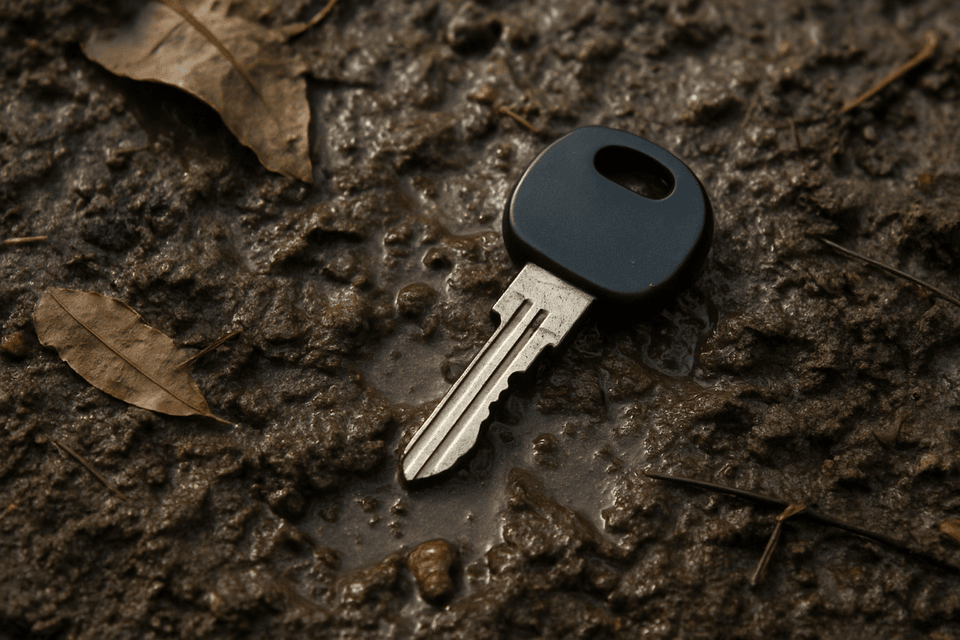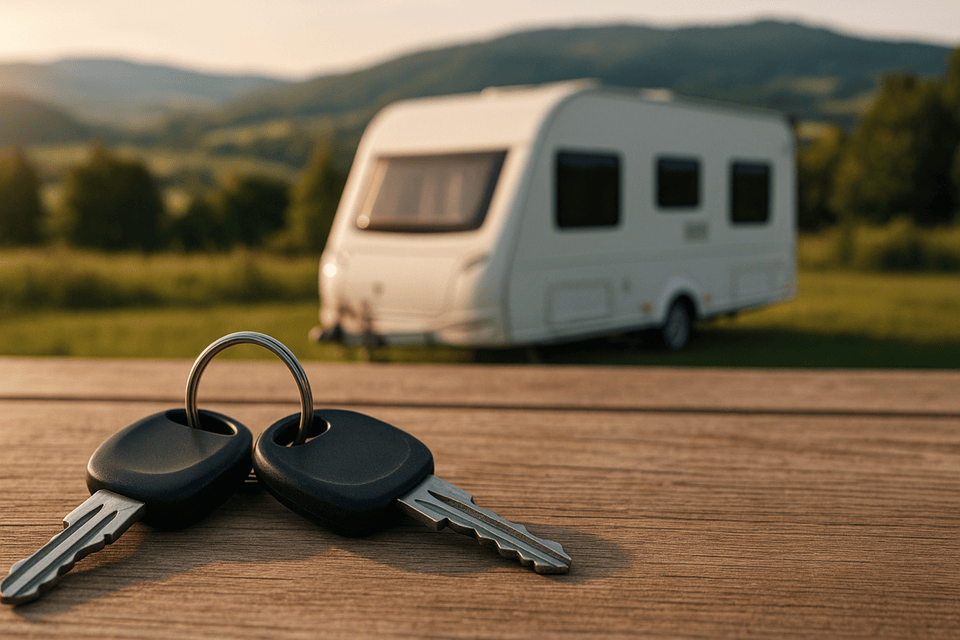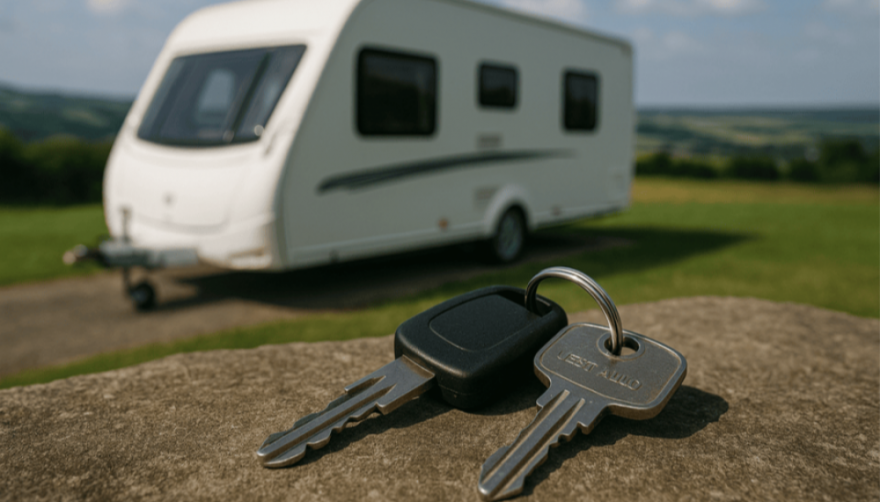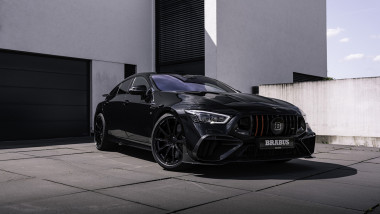Imagine This Situation…
You’ve arrived at your campsite after a long drive, set up your caravan, and enjoyed a relaxing afternoon. The awning is out, the chairs are ready, and the smell of food is still in the air from lunch. You decide to go on a hike in the hills nearby. The scenery is breathtaking, the walk refreshing. But when you return, ready to rest, you reach into your pocket — and your caravan keys are gone.
You search your backpack, check the ground around you, even retrace your steps on the trail. Nothing. Now you’re locked out of your caravan or motorhome, with your belongings inside and no easy way in.
It’s a nightmare scenario that many campers face — but the good news is that losing caravan, motorhome, or camper keys doesn’t have to ruin your holiday.

Step 1: Stay Calm and Search Thoroughly
Before panicking, take these first steps:
• Check pockets and bags again. Keys can easily slip into hidden corners.
• Look inside the caravan windows. They might be left on a table or bed.
• Retrace your route. Sometimes keys drop near the campsite or along short trails.
• Ask at campsite reception. Fellow campers often hand in lost keys.
If your keys are truly gone, you’ll need a replacement quickly.
Step 2: Know Your Brand and Lock Type
Different caravans and motorhomes use different locks and keys. Identifying your brand and model is the first step to finding the right replacement.
At MR-KEY, we supply keys for many popular brands, including:
• Caravans & Motorhomes: Abbey, Ace, Adria, ABI, Auto-Sleeper, Auto-Trail, Autocruise, Avondale, Bailey, Burstner, Caretta, Compass, Dethleffs, Elddis, Fendt, Hymer, Knaus, Mobilvetta, Rapido, Sterling, Swift, Tabbert, Weinsberg, Chausson, Danbury
• Locks & Accessories: Caraloc and more
We also cover locker keys, water filler caps, gas bottle compartments, roof racks, and storage boxes, not just entry doors.
Step 3: Replacement Options
Through the Dealer
• Pros: Original keys, guaranteed fit.
• Cons: Expensive, slow (can take weeks), requires paperwork.
Through MR-KEY
• Keys cut to code – provide your key code and we’ll cut a precise replacement.
• Keys cut by photo – send us a clear picture of your existing key.
• Blank keys – order blanks and have them cut locally.
Why MR-KEY is better than the dealer:
• Fast delivery across Europe
• Affordable pricing
• Wide range of caravan, motorhome, and camper brands
• Guaranteed accuracy with professional cutting
Step 4: Don’t Get Stranded Again – Order a Spare
If you’ve lost your keys once, it’s smart to prepare for next time:
• Keep a spare set at home or with a trusted family member.
• Store a second set in a safe place inside the caravan.
• Use a Bluetooth key tracker (like Tile or AirTag) to find lost keys quickly.

Why MR-KEY?
• Largest range of caravan, motorhome & camper keys in Europe
• Fast delivery to your campsite or home
•Cheaper than dealerships without long waiting times
• Precision cutting for a perfect fit every time
Final Word
Losing your caravan or motorhome keys can turn a dream holiday into a stressful experience. But with MR-KEY, getting a replacement is quick and simple. Whether you need a door key, locker key, or gas compartment key, we’ve got you covered.
Order your Caravan, Motorhome & Camper Keys today from MR-KEY and get back to enjoying your adventure without worry.





 (1)_1743685544.jpg)
_1733224387.jpg)